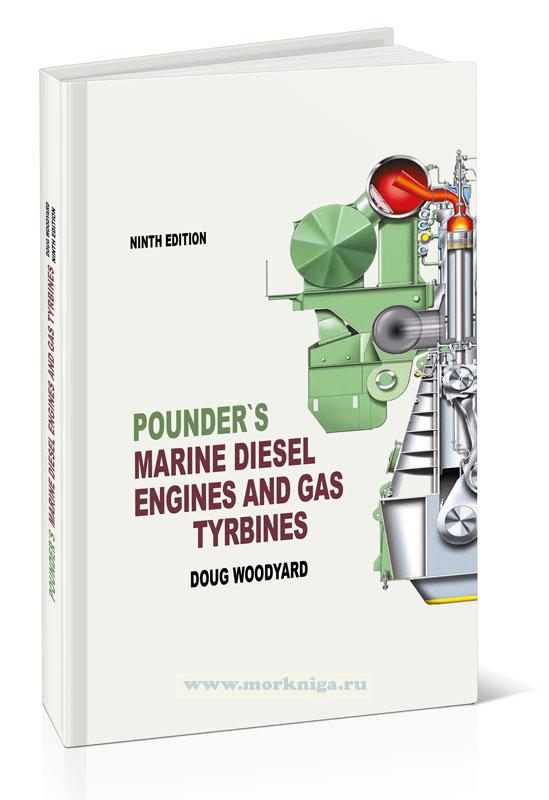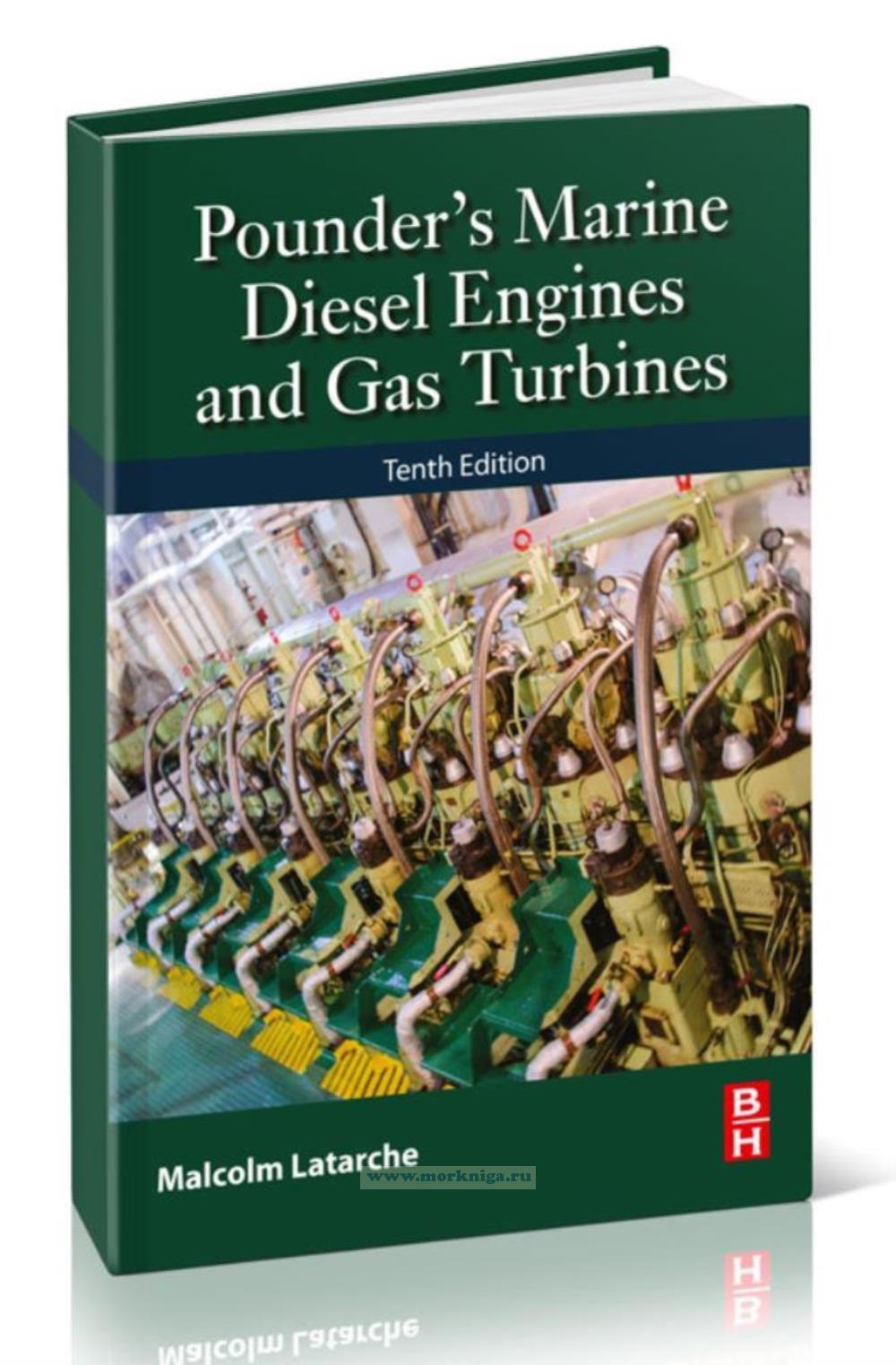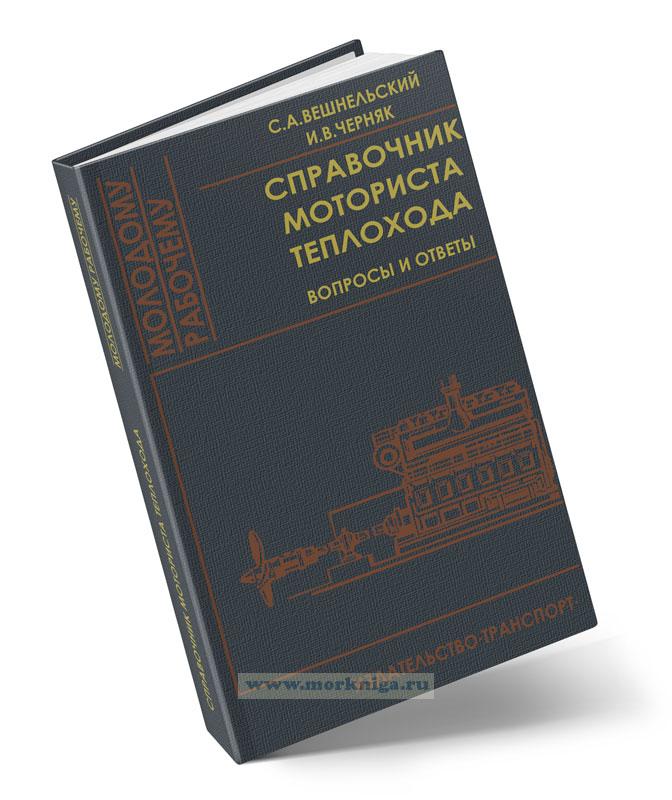Сб с 10 до 16
Pounders Marine diesel engines and gas turbines/Судовые дизельные двигатели и газовые турбины Pounder
Издания на английском языке
9 Edition
Major developments in two-stroke and four-stroke engine designs for propulsion and auxiliary power drives in the 5 years since the publication of the eighth edition of Pounder’s Marine Diesel Engines call for another update.
This ninth edition reflects the generic and specific advances made by marine engine designers and specialists in support technologies-notably turbocharging, fuel treatment, emissions reduction and automation systems-which are driven by: ship designer demands for more compactness and lower weight; ship-owner demands for higher reliability, serviceability and overall operational economy; and shipbuilder demands for lower costs and easier installation procedures.
A historical perspective logs the nautical milestones over the first century of marine diesel technology, which closed with the emergence of electronically controlled low-speed designs paving the path for future so-called "Intelligent Engines". Development progress with these designs and operating experience with the escalating number in service are reported in this new edition.
Since the last edition, increasing interest in dual-fuel (DF) and gas engines for marine and offshore industry applications is reflected in an expanded chapter.
The specification of DF medium-speed diesel machinery for LNG carrier newbuilding projects in 2002 marked the ousting of steam turbine propulsion from its last bastion in commercial shipping. A growing number of these DF-electric installations are now entering service, alongside direct-coupled low-speed engine-powered LNG carriers equipped with boil-off gas reliquefaction plant.
Controls on exhaust gas emissions-particularly nitrogen oxides, sulphur oxides and smoke-continue to tighten regionally and internationally, dictating further responses from engine designers exploiting common rail fuel systems, emulsified fuel, direct water injection and charge air humidification. These and other solutions, including selective catalytic reduction and exhaust gas recirculation systems, are detailed in an extended chapter. The traditional core of this book-reviews of the current programmes of the leading low-, medium- and high-speed engine designers-has been thoroughly updated.
Finally, the author hopes that this edition, like its predecessors, will continue to provide a useful reference for marine engineers ashore and at sea, enginebuilders and ship operators.
Contents
Preface
Introduction: A Century of Diesel Progress
Chapter one Theory and General Principles
Chapter two Dual-Fuel and Gas Engines
Chapter three Exhaust Emissions and Control
Chapter four Fuels and Lubes: Chemistry and Treatment
Chapter five Performance
Chapter six Engine and Plant Selection
Chapter seven Pressure Charging
Chapter eight Fuel Injection
Chapter nine Low-Speed Engines- Introduction
Chapter ten MAN B&W Low-Speed Engines
Chapter eleven Mitsubishi Low-Speed Engines
Chapter twelve Wartsila (Sulzer) Low-Speed Engines
Chapter thirteen Burmeister & Wain Low-Speed Engines
Chapter fourteen Doxford Low-Speed Engines
Chapter fifteen MAN Low-Speed Engines
Chapter sixteen Medium-Speed Engines- Introduction
Chapter seventeen Allen (Rolls-Royce)
Chapter eighteen Alpha Diesel (MAN Diesel)
Chapter nineteen Caterpillar
Chapter twenty Deutz
Chapter twenty one MaK (Caterpillar Marine Power Systems)
Chapter twenty two Man Diesel
Chapter twenty three Bergen (Rolls-Royce)
Chapter twenty four Ruston (MAN Diesel)
Chapter twenty five SEMT Pielstick (MAN Diesel group)
Chapter twenty six Sulzer (Wartsila)
Chapter twenty seven Wartsila
Chapter twenty eight Other Medium-Speed Engines
Chapter twenty nine Low-Speed Four-Stroke Trunk Piston Engines
Chapter thirty High-Speed Engines
Chapter thirty one Gas Turbines
Chapter thirty two Engineroom Safety Matters
Index
10 Edition
Exactly which ship was the first to be powered by a diesel engine is a matter of some debate. Most reference works point to the 7400 dwt Selandia of 1912, but four-stroke diesels had been fitted to many more vessels before the Selandia was built. Both France and the UK had diesel-powered submarines in operation and the Russian navy also had some diesel-powered craft.
Contents
Preface
Introduction
1. International regulations
2. Theory and general principles
3. Dual-fuel and gas engines
4. Exhaust emissions and control
5. Oil fuels chemistry and treatment
6. Alternative fuels and treatment
7. Lubes: Choices and testing
8. Performance
9. Engine and plant selection
10. Turbocharging
11. Fuel injection
12. Waste heat recovery
13. Low-speed two-stroke engines—Introduction
14. MAN B&W low-speed engines
15. Japan Engine Corporation low-speed engines
16. WinGD (Wartsila/Sulzer) low-speed engines
17. Legacy low-speed engines
18. Medium-speed engines—Introduction
19. Anglo Belgian Corporation
20. Caterpillar
21. MaK (Caterpillar Marine Power Systems)
22. MAN Energy Solutions
23. Rolls-Royce/MTU
24. Wartsila
25. Other medium-speed engines
26. High-speed engines
27. Gas turbines
28. Engine-room safety matters
Index


 Повышение долговечности судовых дизелей
Повышение долговечности судовых дизелей  Аэродинамика проточной части судовых турбин
Аэродинамика проточной части судовых турбин  Справочник моториста теплохода. Вопросы и ответы
Справочник моториста теплохода. Вопросы и ответы